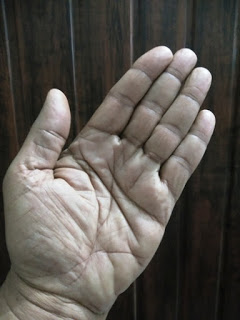No more sweets please….
The word ‘dessert’ – sweet dish – has originated from the French word ‘desservir’ which means ‘to clean the table’.
Since my childhood, I have observed that desserts – the sweet course – cake, pie, fruit, pudding, ice cream etc – eaten at the end of a meal – is always after finishing the food at lunch or dinner.
Tradition that does not allow us bath after a meal has some truth in it as taking a bath especially a warm one does divert blood from does divert blood from the stomach to the skin, but doesn’t impair digestion significantly. The general rule is, after a meal, don’t indulge in strenuous activities that will move energy away from the stomach, which needs “enough” blood for digestion.
There are also different versions about having desserts before or after the meal. The menus at the restaurants put desserts at the end while Ayurveda wants you to being your meals on a sweet note. The sweets always have to wait till the end whether it is regular dal-roti or sabzi or a lavish eight-course feast.
Habitually, long after you have polished off a sumptuous meal and the brain has sent out satiety signals, there’s always room for that baked cheesecake. However, while we have been habituated to satisfying our sweet tooth after a meal – the post-dinner walk is often an excuse to stop by at the local ice-cream vendor – Ayurveda argues that the sweet should come first.
One of my doctor friends says that the sweet taste acts quickly on the taste buds and saliva. Eating the sweet item first enables the flow of digestive secretions. If you eat sweets at the end of meals, you are slowing down your digestion.
He speaks medically that ff the idea of gobbling a gulab jamun before roti-sabji doesn’t agree with you, having even a bite or two of a sweet before vegetables and chapati or rice will help you absorb vitamins and nutrients better.
One my South India colleague told that in cuisine, sweet items are usually served as the first items in a leaf. The meal is also ended with a sweet to leave a sweet taste in the guests’ mouths. It is also a popular belief that eating the sweet first prevents gastronomical burns.
In Punjab, even if no sweet is available at home to be served after the food, ‘gur’ – a close relative of sugar also made from sugarcane – is served, even at the restaurants.
It is also said that in a hungry person, a sweet also helps overpower the vayu (wind) in the stomach, while sour and salty tastes in the middle of the meal help stimulate the digestive fire in the small intestine.
Anyhow, while I had gone for a routine blood test and found my sugar levels not on the higher side but just on the border line, in pre-diabetic conditions. Doctor advised me to make corrections in the lifestyle like eating on time, regular exercise otherwise I will have to struggle being a diabetic forever.
My doctor friend become speechless when I said, Dear, I become sweet by eating sweets. So I will continue eating desserts till I become diabetic to become sweet till you say ‘no more sweets please’.




